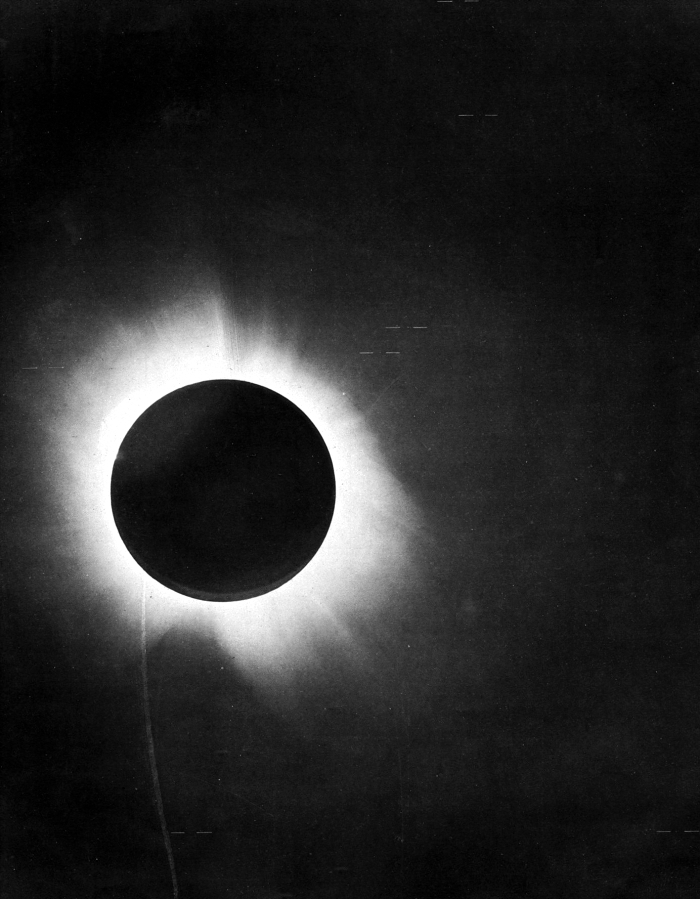Relativity proved 100 years ago

If you look closely you may be
able to see the tiny marks
he used to indicate the stars
he observed
100 years ago today, on the 29th May 1919, there was a very special Solar Eclipse. Of course, all eclipses are pretty special, but this was one of the first since Einstein had proposed his theory of General Relativity, and the eclipse gave a perfect opportunity to test the theory. Among other things, General Relativity predicted that light passing a star like the Sun should be bent by gravity - in a similar way that a lens bends light. This meant that it might be possible to measure a small change in the position of a star that appeared to get close to the Sun on the sky. Normally that is impossible to see, because the Sun is too bright and the sky bright blue, but during an eclipse the Sun is blocked out, and the sky dark enough to see some stars.
The opportunity was too good to miss and astronomers set off to West Africa and Brazil to try to catch the elusive moment. It was a difficult and even dangerous trip in those days, and the risk of bad weather quite high, but the expedition to the island of Principe off Africa got lucky, with the eclipse just visible through a break in the clouds.
Led by the astronomer Arthur Eddington, the team developed the photographs there and then and just a few days later, Eddington was able to make the measurements needed to prove Einstein was right.
The experiment was a huge success, with front-page headlines in newspapers all over the world, making Einstein famous almost overnight. Relativity has since passed many more tests, but it was this first result by Eddington and his colleagues that led to it being accepted by physicists.

